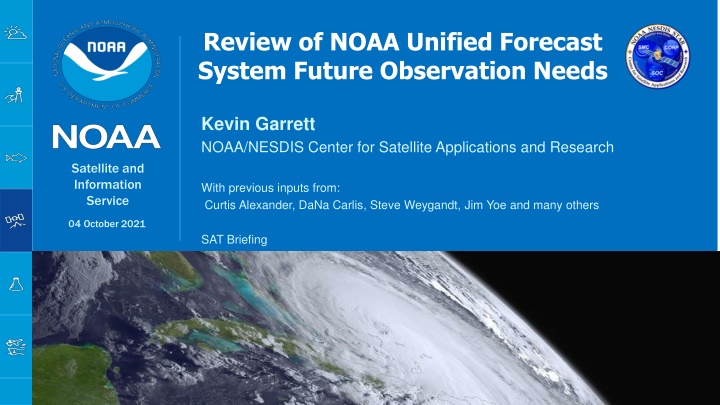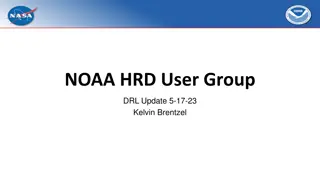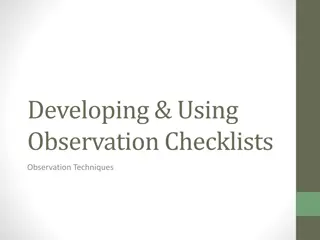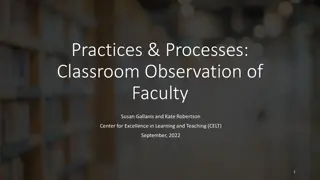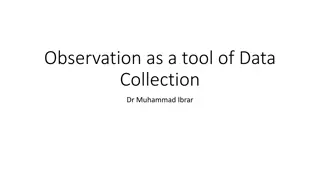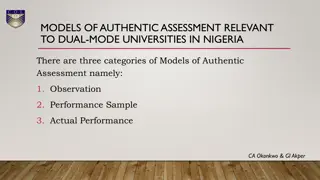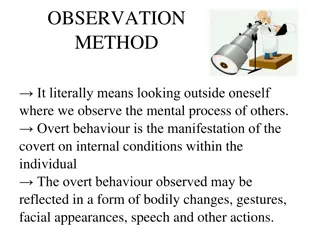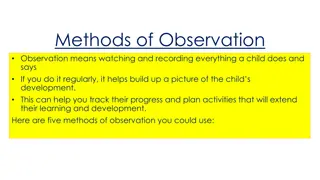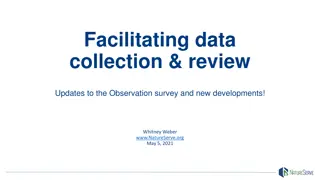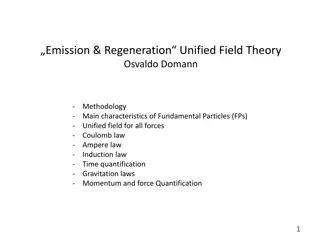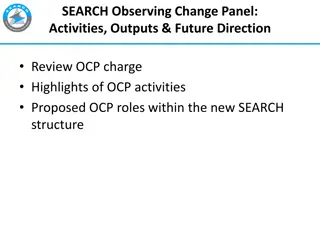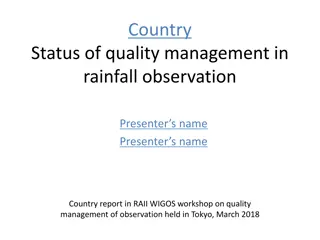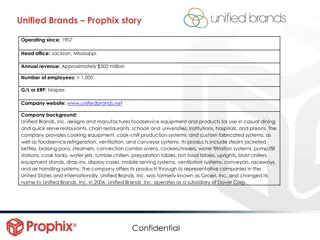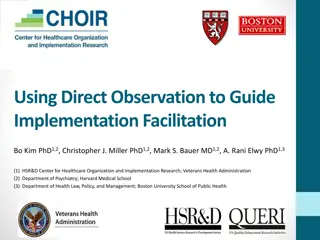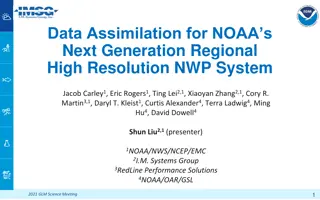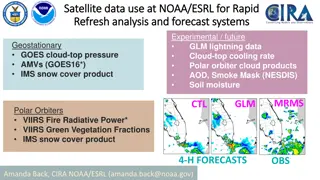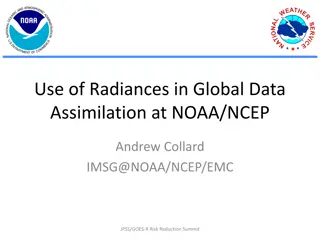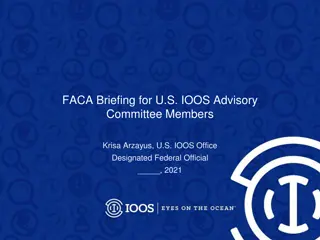Future Needs for NOAA Unified Forecast System Observation
The NOAA Unified Forecast System (UFS) is a comprehensive Earth system model designed for regional to global predictive time scales, covering various domains such as ocean, land, cryosphere, atmosphere, and more. The system involves research and operational components like data assimilation, forecasting, and verification. The GEO-XO Requirements Working Group focuses on capturing future observational requirements for the UFS, aligning with its portfolio and modeling capabilities. Linking UFS capabilities to observations is crucial in developing a catalog that covers current and future state attributes.
Download Presentation

Please find below an Image/Link to download the presentation.
The content on the website is provided AS IS for your information and personal use only. It may not be sold, licensed, or shared on other websites without obtaining consent from the author.If you encounter any issues during the download, it is possible that the publisher has removed the file from their server.
You are allowed to download the files provided on this website for personal or commercial use, subject to the condition that they are used lawfully. All files are the property of their respective owners.
The content on the website is provided AS IS for your information and personal use only. It may not be sold, licensed, or shared on other websites without obtaining consent from the author.
E N D
Presentation Transcript
C:\Users\jacqui.fenner\Desktop\PTT templates\images\noaa icons\noaa_icons-10.png Review of NOAA Unified Forecast System Future Observation Needs C:\Users\jacqui.fenner\Desktop\PTT templates\images\noaa icons\noaa_icons-08.png Kevin Garrett NOAA/NESDIS Center for Satellite Applications and Research C:\Users\jacqui.fenner\Desktop\PTT templates\images\noaa icons\noaa_icons-07.png Satellite and Information Service With previous inputs from: Curtis Alexander, DaNa Carlis, Steve Weygandt, Jim Yoe and many others C:\Users\jacqui.fenner\Desktop\PTT templates\images\noaa icons\noaa_icons-06.png 04 October 2021 SAT Briefing C:\Users\jacqui.fenner\Desktop\PTT templates\images\noaa icons\noaa_icons-05.png C:\Users\jacqui.fenner\Desktop\PTT templates\images\noaa icons\noaa_icons-04.png
Unified Forecast System The Unified Forecast System (UFS) is envisioned to be a community-based, coupled comprehensive Earth system model Spans regional to global domains Predictive times scales (sub hourly to seasonal) Ocean, Land, Cryosphere, Atmosphere, Space Wx, Air Quality, etc. Research and Operational Preprocessing, Data Assimilation, Forecasting, Post. & Verification Shared components (infrastructure, physics, etc). https://www.ufscommunity.org/ https://www.weather.gov/media/sti/nggps/UFS%20SIP%20FY19-21_20181129.pdf
Capture future model observational requirements The GEO-XO Requirements Working Group (XORWG) NWP Subteam tasked to identify NWP observation needs from GEO 2030-2050 (parameters but not detailed attributes) Developed a comprehensive catalog to capture needs more broadly Aligned with UFS portfolio (NWP focus) Captured evolution of modeling enterprise/capability (as much as possible); includes both current use and future needs Not just limited to GEO (orbit agnostic) Linkage to other observation requirements repositories (NSOSA, COURL); more needed
Linking UFS Capabilities to Observations Observation Type Domain/Coverage Develop catalog that encompasses the current and future state of the UFS. UFS Models Assimilated? (Assimilation) Cycling Interval GEO Observation Resolution Attributes Model X Observations LEO Observation Attributes Model Attributes Thinning Resolution Latency, Refresh, etc. Latency/Run-time Observation volume
Continued Summary Some notes: Highest radiance requirements heavily driven by SRW/CAM Some information (needs) gaps remaining (Ocean, Hurricane) Attribute ranges may require fine tuning, boundaries (min/max) Shift to make technology agnostic?
Which models drive future constellations? GFS Global vs Regional Requirements RRFS
Next steps Fill in gaps (UFS areas) Narrow-down model requirements (increased granularity) Strengthen linkage to existing requirements and to other efforts
